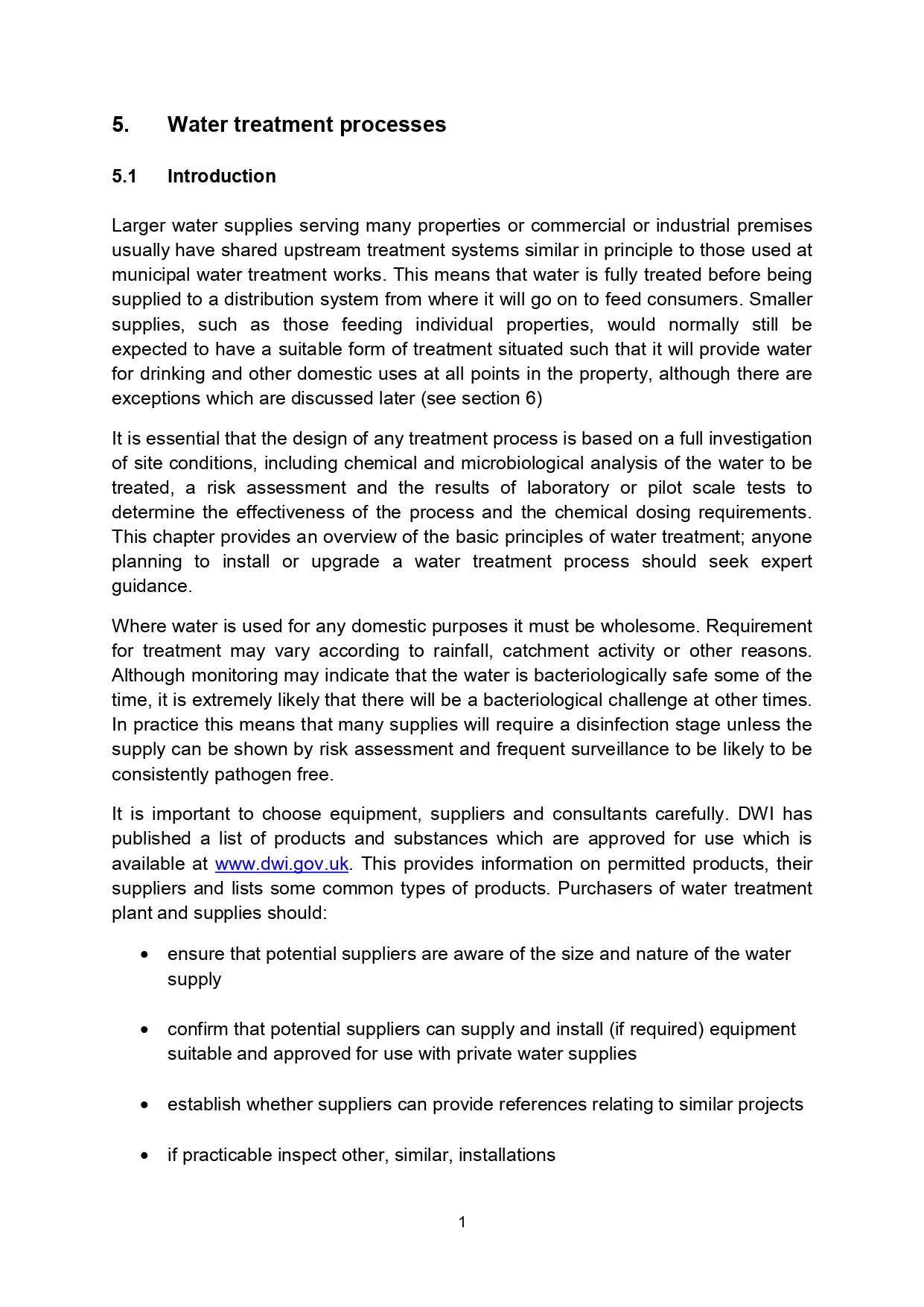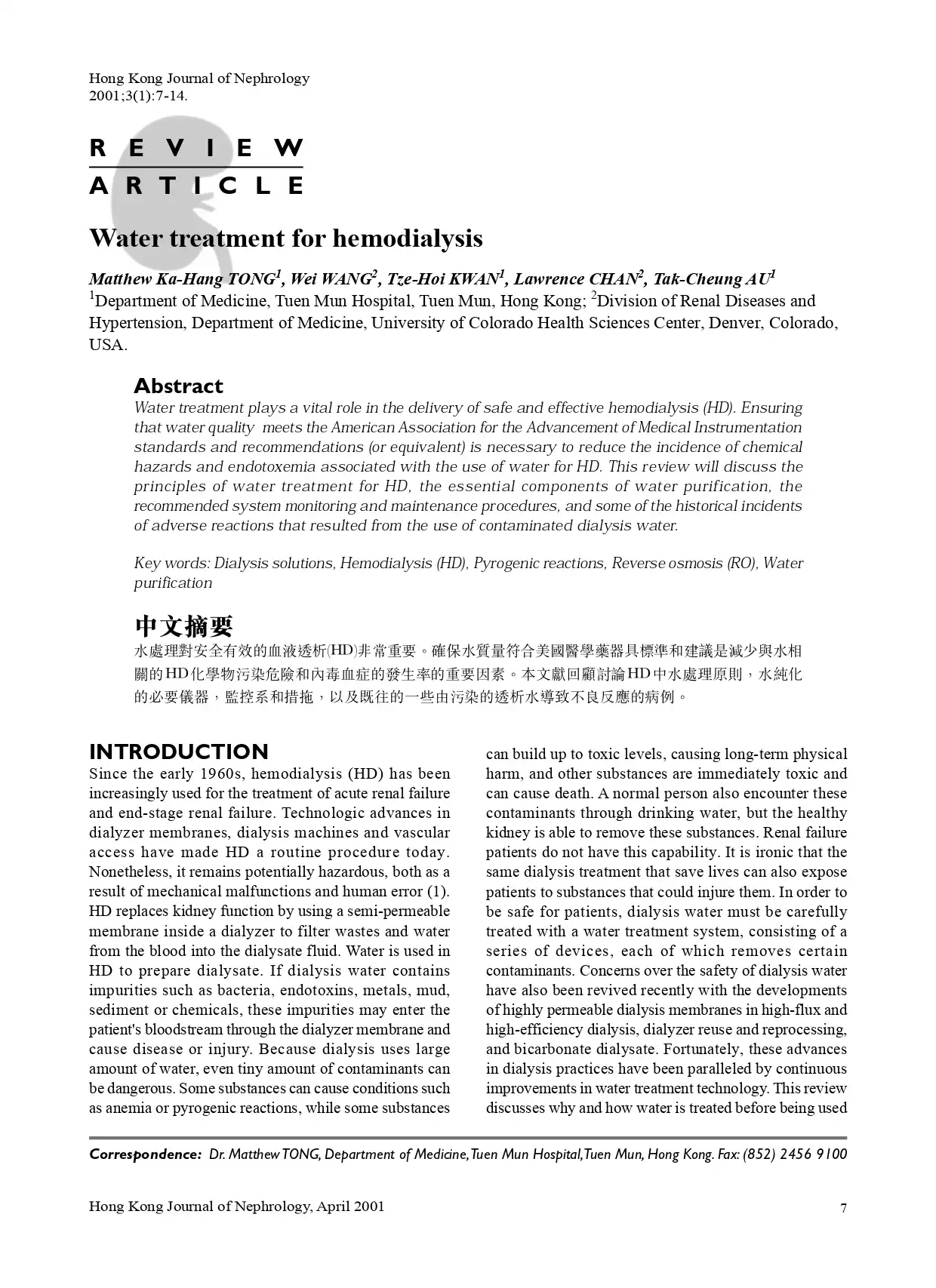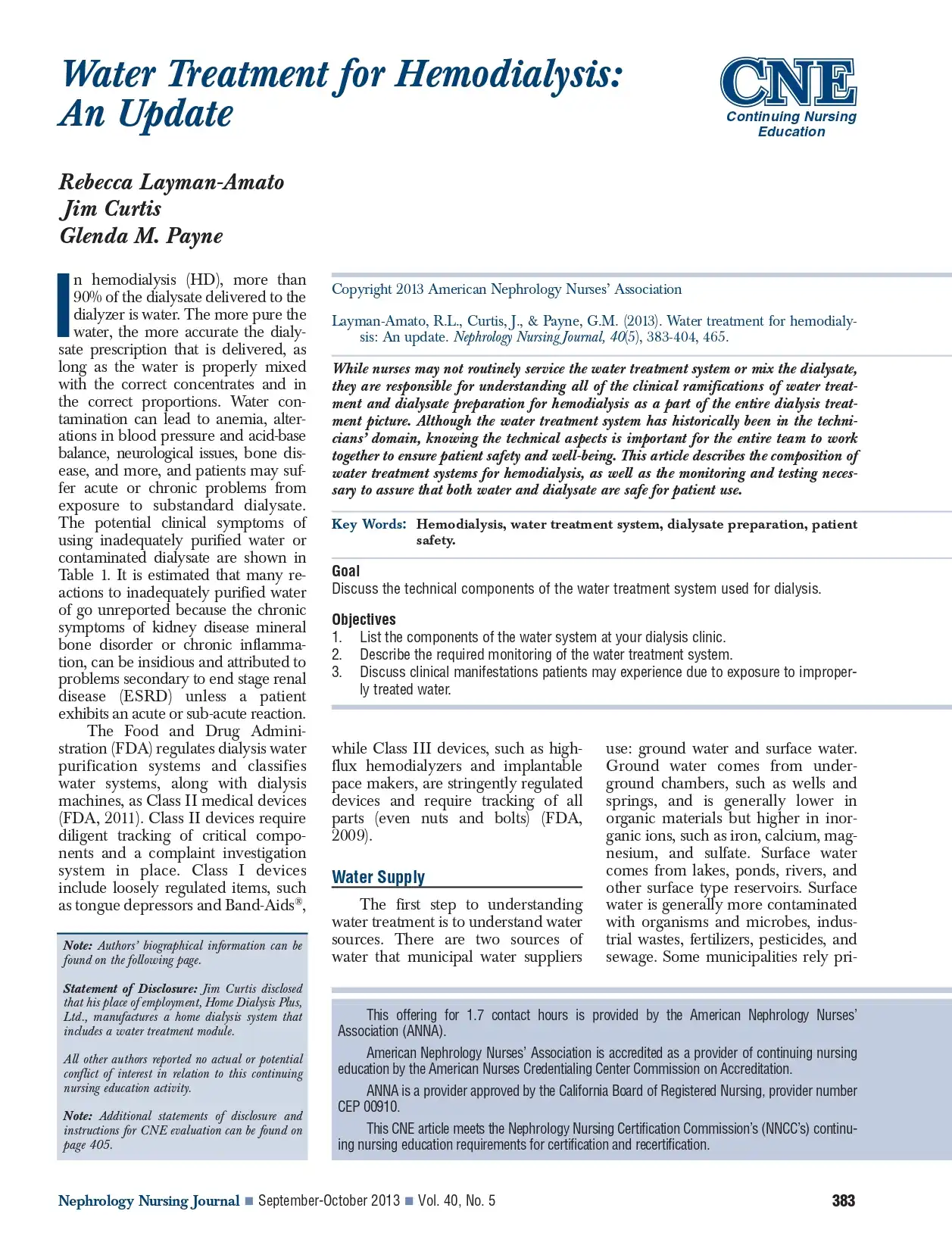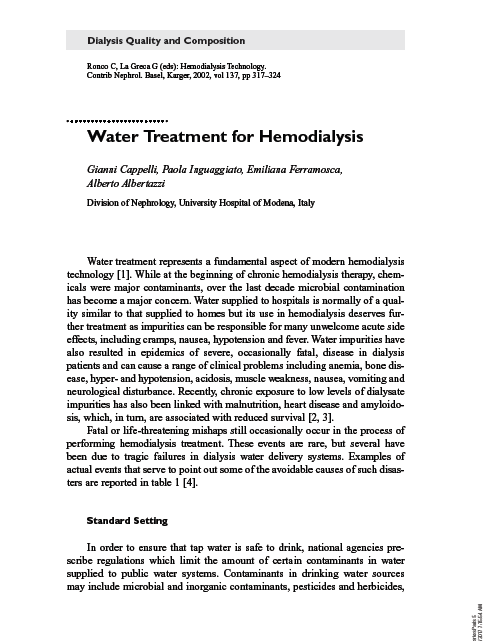Water Treatment Processes
Introduction
Larger water supplies serving many properties or commercial or industrial premises usually have shared upstream treatment systems similar in principle to those used at municipal water treatment works. This means that water is fully treated before being supplied to a distribution system from where it will go on to feed consumers. Smaller supplies, such as those feeding individual properties, would normally still be expected to have a suitable form of treatment situated such that it will provide water for drinking and other domestic uses at all points in the property, although there are exceptions which are discussed later . It is essential that the design of any treatment process is based on a full investigation of site conditions, including chemical and microbiological analysis of the water to be treated, a risk assessment and the results of laboratory or pilot scale tests to determine the effectiveness of the process and the chemical dosing requirements. This chapter provides an overview of the basic principles of water treatment; anyone planning to install or upgrade a water treatment process should seek expert guidance.
Water Treatment Processes
Introduction
Larger water supplies serving many properties or commercial or industrial premises usually have shared upstream treatment systems similar in principle to those used at municipal water treatment works. This means that water is fully treated before being supplied to a distribution system from where it will go on to feed consumers. Smaller supplies, such as those feeding individual properties, would normally still be expected to have a suitable form of treatment situated such that it will provide water for drinking and other domestic uses at all points in the property, although there are exceptions which are discussed later . It is essential that the design of any treatment process is based on a full investigation of site conditions, including chemical and microbiological analysis of the water to be treated, a risk assessment and the results of laboratory or pilot scale tests to determine the effectiveness of the process and the chemical dosing requirements. This chapter provides an overview of the basic principles of water treatment; anyone planning to install or upgrade a water treatment process should seek expert guidance.
Water Treatment For Hemodialysis
Abstract
Water treatment plays a vital role in the delivery of safe and effective hemodialysis (HD). Ensuring that water quality meets the American Association for the Advancement of Medical Instrumentation standards and recommendations (or equivalent) is necessary to reduce the incidence of chemical
hazards and endotoxemia associated with the use of water for HD. This review will discuss the principles of water treatment for HD, the essential components of water purification, the recommended system monitoring and maintenance procedures, and some of the historical incidents of adverse reactions that resulted from the use of contaminated dialysis water.
Water Treatment For Hemodialysis
Abstract
Water treatment plays a vital role in the delivery of safe and effective hemodialysis (HD). Ensuring that water quality meets the American Association for the Advancement of Medical Instrumentation standards and recommendations (or equivalent) is necessary to reduce the incidence of chemical
hazards and endotoxemia associated with the use of water for HD. This review will discuss the principles of water treatment for HD, the essential components of water purification, the recommended system monitoring and maintenance procedures, and some of the historical incidents of adverse reactions that resulted from the use of contaminated dialysis water.
Water Treatment for Hemodialysis
Introduction :
Water treatment represents a fundamental aspect of modern hemodialysis technology [1]. While at the beginning of chronic hemodialysis therapy, chemicals were major contaminants, over the last decade microbial contamination has become a major concern. Water supplied to hospitals is normally of a quality similar to that supplied to homes but its use in hemodialysis deserves further treatment as impurities can be responsible for many unwelcome acute side effects, including cramps, nausea, hypotension and fever. Water impurities have also resulted in epidemics of severe, occasionally fatal, disease in dialysis patients and can cause a range of clinical problems including anemia, bone disease, hyper- and hypotension, acidosis, muscle weakness, nausea, vomiting and neurological disturbance. Recently, chronic exposure to low levels of dialysate impurities has also been linked with malnutrition, heart disease and amyloidosis, which, in turn, are associated with reduced survival. Fatal or life-threatening mishaps still occasionally occur in the process of performing hemodialysis treatment.
Water Treatment for Hemodialysis
Introduction :
Water treatment represents a fundamental aspect of modern hemodialysis technology [1]. While at the beginning of chronic hemodialysis therapy, chemicals were major contaminants, over the last decade microbial contamination has become a major concern. Water supplied to hospitals is normally of a quality similar to that supplied to homes but its use in hemodialysis deserves further treatment as impurities can be responsible for many unwelcome acute side effects, including cramps, nausea, hypotension and fever. Water impurities have also resulted in epidemics of severe, occasionally fatal, disease in dialysis patients and can cause a range of clinical problems including anemia, bone disease, hyper- and hypotension, acidosis, muscle weakness, nausea, vomiting and neurological disturbance. Recently, chronic exposure to low levels of dialysate impurities has also been linked with malnutrition, heart disease and amyloidosis, which, in turn, are associated with reduced survival. Fatal or life-threatening mishaps still occasionally occur in the process of performing hemodialysis treatment.
Softening Water Treatment
INTRODUCTION
• Sedimentation, coagulation and filtration suspended solids
• Chemical precipitation: The removal of dissolved objectionable substances from water by the addition of some chemicals to convert them into insoluble substances
• Softening is the removal of hardness from water.
• Measurements of hardness are given in terms of the calcium carbonate equivalent.
Softening Water Treatment
INTRODUCTION
• Sedimentation, coagulation and filtration suspended solids
• Chemical precipitation: The removal of dissolved objectionable substances from water by the addition of some chemicals to convert them into insoluble substances
• Softening is the removal of hardness from water.
• Measurements of hardness are given in terms of the calcium carbonate equivalent.










